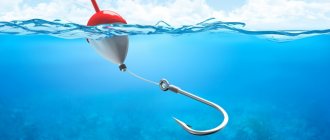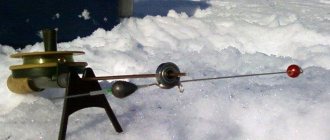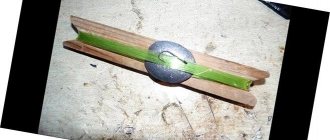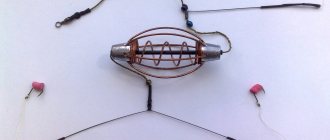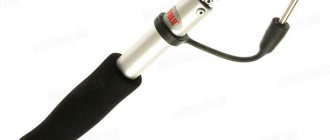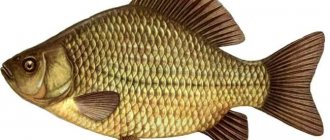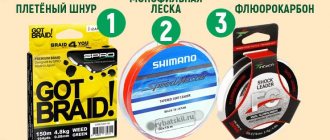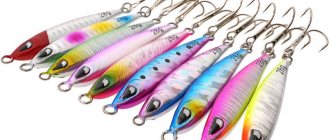The equipment of a winter fishing rod for a jig is carried out taking into account the fishing conditions and the fish that the subglacier hunts. Active play with bait requires appropriate adjustment of the gear - otherwise it simply will not work correctly. The choice of weight and configuration of the bait, the thickness of the fishing line for winter jig fishing, and the adjustment of the nod are inseparable and form a single working system. All components are selected and configured. Let's take a closer look at the nuances of the correct equipment for winter fishing rods with jigs.
Bait fishing
In this article we will focus on the equipment of fishing rods for active fishing with jigs. Features of the rewinder equipment are disclosed in a separate article: https://berlogakarelia.ru/snasti/bezmotylka/udochki-dlya-bezmotylki
Winter fishing rods for jig fishing are equipped with an order of magnitude lighter than equipment for stationary fishing. The sensitivity of the equipment is of paramount importance, which allows you to give the bait a seductive game and record weak bites from inactive fish. Equipment requirements:
- A lightweight rod that is comfortable for anglers to work with all day long.
- Careful selection and adjustment of equipment components - jigs, fishing lines and nods. Tackle balance.
- Choosing the fishing rod itself. What is important here is the torsion of the coil without jamming and internal overlaps, and the ability to adjust the tightening torque. Thin fishing lines are used for active play. When biting large fish, it is important that the tackle freely releases the emergency reserve when jerking.
- A set of pre-prepared gear, from three or more, configured for various fishing conditions.
It is important to understand that the right tackle is only one of the factors of successful fishing, so to speak, its technical part. No less attention is paid to fishing tactics, playing techniques, searching for catchable places in the reservoir and the feeding system. Read more in the article about winter jig fishing
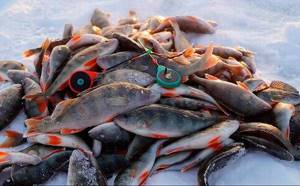
The best way to fish from ice in winter
When fishing in winter, you need to carefully choose your fishing rod. It has a whip, a handle with or without a reel.
A winter fishing rod can be of the following types:
- float;
- jig;
- a model with which it is possible to fish with balance beams and spoons.
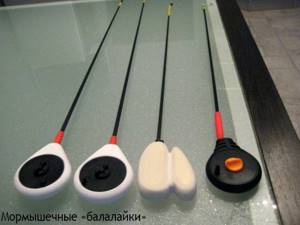
The model is simple but ergonomic. It will be convenient for the fisherman to use the fishing rod, because to play with the jig you need to move the brush.
Choosing a fishing rod
Active game fishing is a flexible fishing method that gives you a greater chance of catching when there is no widespread bite “for everything.” Usually they switch to this method after some mastery of conventional stationary fishing from the bottom with a nod or float. The general scheme of rigging a fishing rod for active play is the same as when fishing from the bottom with a nod. Some newcomers to active fishing get involved in it by trying out the bait game next to standing stationary fishing rods. Others initially practice active search tactics and bait the game with a jig. The next stage is fishing with reelless baits, which requires an even more careful approach to technique and equipment.
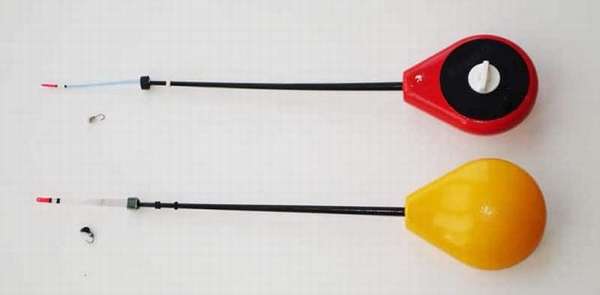
At the beginning of the journey, 2-3 ordinary balalaikas from a fishing store are enough to try. Often fishermen make their own gear. After some modification, provided that the settings are correct, such tackle is not inferior in catchability to special “jigs” fishing rods. However, sports balalaikas are much more convenient to use and lighter. The overall design is more comfortable and sensitive. The right winter fishing rod for a jig is a perfect hunting tool, coupled with fishing tactics, which allows you to count on a catch during periods when, with standard hatching with bait from the bottom, no bites are observed. Let's look at how to choose a fishing rod for winter jig fishing.

Winding fishing line on a winter fishing rod
On any winter fishing rod of this type, about 10-11 cm of fishing line is wound in one turn . I usually reel about 10 meters. Because In our conditions, fishing takes place on average at 4-5 meters, and 6 meters is already extremely rare, and therefore 10 meters of fishing line is enough for the eyes. It’s better to change this line more often, because... You constantly have to re-bandage the jig, then a break occurs - i.e. the fishing line is constantly being used up. Also, we must not forget that the shelf life of fishing line is maximum 2-3 years. Further, its characteristics drop very significantly. And the chances of the line coming off increase significantly. There's no point in getting to that point. It's better not to save money.
Fishing line is one of those things that needs to be changed more often..
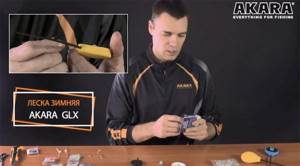
Winding fishing line onto a fishing rod.
Now we wind the line itself directly onto the fishing rod. As mentioned above, in one turn, about 10 cm is wound. I usually reel in 120 turns, about 12 meters, and this is enough for two to three years of fishing. A special hole is made in the fishing rod and a cambric is inserted for more convenient threading of the fishing line. We make a loop on the fishing line - a regular noose, but it needs to be placed on the spool in such a way that it (the loop) is tightened. But if it is made in the opposite direction, then it will simply be impossible to wind the line, it will simply scroll. Pay attention to this, but it won't be difficult to understand. Even if you don’t succeed the first time, you will succeed the second time - there are only two options.

We make a loop on the fishing line and place it on the spool so that it tightens.
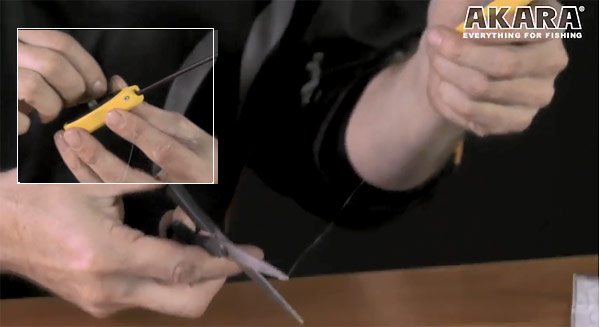
After winding, cut the fishing line with scissors. NOT with teeth!
The fishing line is off, we make 120 revolutions. We reeled in the fishing line . We cut, it is better to do this either with scissors or a sharp knife. Although the fishing line, of course, can be easily bitten by the teeth, it is better not to do this, otherwise the fishing line will begin to unwind at this point, and then it will be very difficult to thread it onto the jig.
We assemble the fishing rod itself accordingly so that it does not unwind.
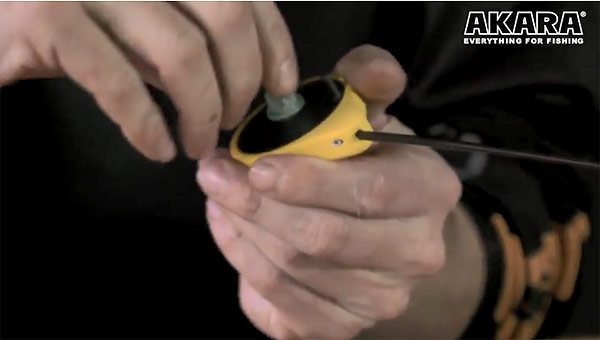
Fishing rods for jigs
Let's assume that the angler has already tried fishing with a jig, using standard fishing rods on a riser, and decided to take the active game more seriously. To do this, we set up that we will need several tackles, about a dozen, pre-balanced at home - for different weights of jigs, respectively, with selected nods and line thicknesses. Therefore, you need to buy 5-10 fishing rods at once. You should pay attention to special jig fishing rods - lightweight winter balalaikas. Fishing stores and online stores now sell everything you need for this. Specialized sports winter fishing rods for jigs are the best option. Such fishing rods are a little more expensive (100-300 rubles), however, they are worth it. Such fishing rods were originally designed for game fishing with jigs. However, such gear is not always easy to obtain. Sometimes you need to do some serious shopping or surf the Internet in search of the right option.
Yaroslavl balalaika, US-4 Tri Kita and HFB-22
The Master Sportivnaya winter jig fishing rod was developed by the famous sports fisherman Evgeny Chabutkin from Yaroslavl. The tackle is popular among athletes and amateurs. Light weight (11 grams) and size (thickness 6 mm), simplicity. There are no special bells and whistles - the design is simply made exactly as needed for jig fishing. The fishing rod has been verified by the creator’s many years of competition experience. The cost of the product is about 300 rubles. Cheaper analogues - Three whales of the US-4 Sportivnaya and Chinese replicas (for example, Rosy Down or HFB-22). These products are no worse than the Yaroslavl ancestor, but many times cheaper.
Ivanovo balalaika
A similar product is a sports balalaika from Mastiv for 100 rubles. The designs and dimensions are similar. The body is made of hard foam. Thus, the coil is built into a foam casing. This is both an advantage and a disadvantage. Light weight and “warmth” of the material for the hands against fragility. This fishing rod requires careful handling.
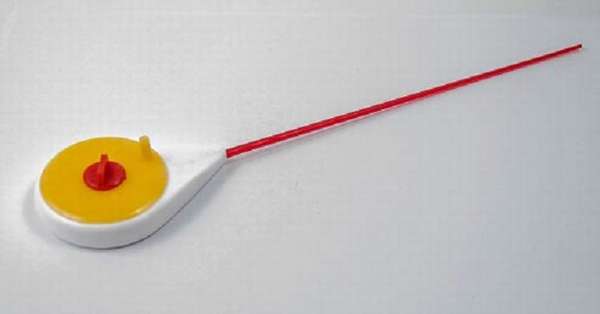
killer whale
The Killer Fishing Rod from Crazy Brothers is also specially designed for game jig fishing. The special curve of the body may be convenient for anglers. Light weight, smooth rotation of the reel, overall lightness and simplicity.
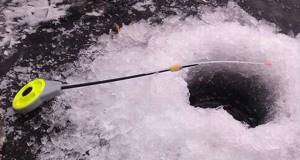
These three balalaikas are considered the best winter fishing rods for jig fishing. These tackles are also suitable for reelless fishing without a nod, if you replace the whip with a thin carbon one. The light weight of the tackle as a whole allows you to feel bites in your hand and give the game the desired high-frequency character. You need to understand that it is better not to leave such fishing rods unattended in the riser hole - even a small roach will pull such a light structure under the water.
Equipment for a winter balalaika fishing rod, installation of jig tackle

in the photo Maxim Efimov is the world champion in jig fishing. A series of reviews on the Basics of Winter Fishing.
Hello! My name is Maxim Efimov , and in this review I would like to talk about the installation of jig tackle .
Previously, we touched on the topic of choosing a jig, selecting a nod, fishing line and fishing rod. Now let’s put everything together, and I’ll show you how it looks in real life. Fishing tackle for a jig consists of only four components: the fishing rod itself, the nod, the jig and the fishing line. But the main thing is to connect everything together, and then catch it all.
I prefer winter fishing rods like balalaika. The photo below shows two models of balalaika fishing rods. Please note - one fishing rod is a little thinner, the other is a little thicker. I will mount it on the thinner one. In terms of functionality, the fishing rods are absolutely identical, and the fishing line is wound on them in equal quantities. It’s just that one is thinner, and it fits better in my hand, i.e. for me it is more comfortable, and the second one is thicker. It also fits well in the hand, but this, as they say, is a matter of taste. Some people like more miniature ones, while others like another option.
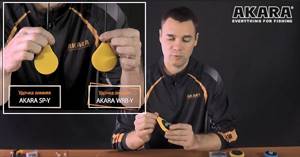
Amateur balalaikas
Among amateurs, ordinary lightweight balalaika fishing rods are more common, which are cheaper (from 50 rubles) and are more often found in stores. The weight of such gear is a little more - from 20 grams. After purchase, these fishing rods need to be modified - remove burrs, plastic deposits and roughness with a file, sandpaper or knife, ensuring a smooth ride for the reel. After modification, such tackle is not inferior to sports gear and works perfectly with a jig.
- Balalaika US-1 (Three Whales) - a simpler version of Salmo Ice Rod,
- Luck Sports,
- Salmo Ice Wilrod,
- Salmo Easy Icerod.
Of course, you can surf the net and find something else. The main thing is to follow the principles. For an active jig you need a light, comfortable fishing rod with smooth rotation of the reel without jamming.
Finalization of the balalaika
Even an ordinary standard balalaika, after modification, is quite possible to successfully use with an active jig attachment. Each fisherman independently customizes his fishing rod to suit himself. Some amateurs remake already excellent sports fishing rods - everyone has their own vision of the correct tackle. Rework options:
- Disassemble the coil, remove all roughness and sagging with sandpaper.
- Place fluoroplastic washers under the tightening screw.
- Foam bodies are processed inside with a pencil, resulting in a graphite lubricant effect, which improves gliding.
- Processing and drilling holes for fishing line (in plastic). Inserting or gluing hard cambric (in polystyrene) into it.
- Replacing the tip to suit your own needs (picker whip, piece of summer carbon, etc.)
- Gluing strips of foam onto plastic cases (for a “warm” grip with bare fingers and comfort in cold weather).

Differences in designs will tell little to an angler without experience in a store, but on a pond, during use, much will become clear. When choosing, do not forget the main principles - simplicity, lightness and reliability, smooth sliding of the reel, ease of transportation and quick deployment on the pond. Next, we’ll look at what line to put on a winter fishing rod for jig fishing.
Advantages and disadvantages of the balalaika
The winter balalaika fishing rod is comfortable to hold in your hands. The tackle is light, so it will be easy for a novice fisherman to play with a jig. Its advantages:
- light weight. It can be held with one hand; the fisherman uses his thumb to switch the reel;
- reliable design. The fishing line is securely fastened, it does not reset spontaneously;
- compactness. You can take several fishing rods for fishing; they will not take up much space. This fishing rod fits in a bag without any problems;
- the product has a comfortable handle;
- there are several options for equipment, the fisherman will not have to change it in the cold;
- no additional tools are needed for assembly;
- The absence of unnecessary parts on the body prevents tangling of the line.
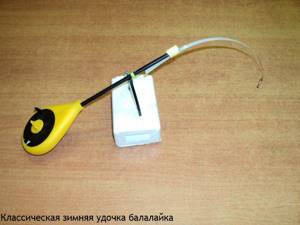
Fishermen will appreciate the advantages of the fishing rod. The handle of the fishing rod is round and the reel is placed in it. It is complemented with a whip. In severe frost they will not have to untangle the fishing line. But when choosing a fishing rod, the following disadvantages of the model are taken into account:
- there is no way to attach the bait to the fishing rod. This should be taken into account when transporting the product;
- the bite is clearly felt if the fisherman holds the device with bare hands. Working without gloves causes discomfort;
- Fishing is done from the knees, so fishermen need to have warm clothes.
- If casting is done carelessly, there may be burrs on the spool. This could stall her.
Fishermen modify fishing rods bought in a store; the reel spool should rotate without difficulty. If you don’t want to spend money or troubleshoot defects, you can make a fishing rod with your own hands.
Line for winter jig
The fishing line for the winter jig is selected depending on the weight of the bait and the fishing depth. Athletes use the finest webs 0.05-0.08 mm, every gram of catch counts. Such thin monofilaments require careful handling. For amateurs, it is advisable to use diameters of 0.08 – 0.12 mm. There was an opinion that fish bite better on thin fishing line. Of course, this is true in absolute terms, but for a jig it doesn’t matter. The fish are the same, 0.08 is worth in the equipment, or 0.1 mm. But this indicator significantly affects the performance of the jig, depending on the fishing depth. The greater the depth, the wider the area of contact between the surface of the fishing line and the water, and, accordingly, the stronger the resistance. At great depths, tackle with a light jig and thick fishing line will not achieve the desired high-frequency play. On the other hand, when high frequency is not needed (for example, when fishing for crucian carp, bream), it makes no sense to make the line too thin; it is better to increase reliability, since large fish are likely to bite.

The best fishing line for winter jig fishing is special monofilament, fluorocarbon or fluorocarbon. We will not offer tops and ratings of the best winter fishing lines for jigs. There are hundreds of manufacturers, and each angler specifically evaluates the performance of the fishing line. The general requirements are:
- Quality, tensile strength, compliance with the declared diameter.
- Medium stretch.
- Lack of memory - when immersed, the equipment must straighten the monofilament into a line.
- Wear resistance to damage from ice.
- No loss of elasticity in the cold.
Over time, the angler adapts to specific monofilaments, developing his own vision of which jig line to use and in what situations.
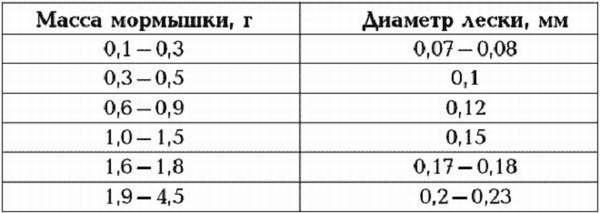
Dependence of rig thickness on fishing conditions
Let’s take a closer look at which fishing line to use for winter jig fishing, depending on the factors. When assembling a set of tackle, the angler first selects the weight of the baits with which he will equip his fishing rods. Attachment jigs are not as diverse as jigs. Experienced fishermen do not have much difference in shapes and colors. The box contains the usual drops, balls and oats of nondescript colors, but they are all clearly arranged according to scales. It is the weight of the bait that is the initial factor, depending on which the fishing line is selected and then the nod is adjusted. The next factor is depth. The lighter the bait and the greater the depth, the thinner the line on a winter fishing rod with a jig. A difference of 0.01 mm at great depths for a light bait makes a difference (if high-frequency play is needed).
The third condition is the activity of the fish. Bream and crucian carp are sometimes very sensitive to foreign objects, and when the bite is sluggish, they immediately throw the bait out of their mouths, feeling resistance. Therefore, if bites are observed, but hooks are zero, we take a fishing rod with thinner equipment.
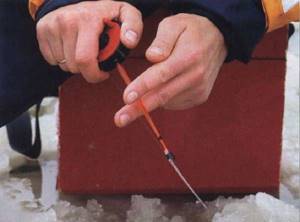
Amateur fishermen are not particularly eager to create twenty gears, each of which has a fishing line from 0.05 to 0.12 mm. In amateur practice, it is advisable to use three diameters - 0.07 or 0.08 mm, 0.1 and 0.12 mm. Moreover, the main and universal option will be the middle option – 0.1 mm. We use a thickness of 0.07 for the lightest pellets at depth, for roach and perch. Diameter 0.12 – for crucian carp and carp at relatively shallow depths and large jigs. For depths, thin fishing lines are also advisable because there is greater stretchability over a long section, which makes it possible to catch large fish. For larger fish in the shallows, of course, it is better to take a thicker monofilament so that the tackle can withstand the first jerks. Here is the next factor - the thickness of the fishing line for winter jig fishing also depends on the size of the fish being caught. After fitting, the specified diameter and weight are written on each balalaika with a marker. If a change is necessary, the necessary tackle is taken out of the box.
Thus, the gear is configured as part of the set (this is approximately what each angler does for himself):
- Thin fishing line, small baits (for small fish at any depth),
- Thin line and medium weights (large fish at depth),
- Diameter 0.1 mm, various baits - universal tackle,
- Heavy lures on medium line for depth,
- Thick monofilament with medium and large baits for shallow depths.
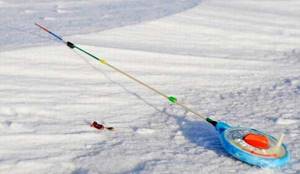
Ten simple steps to make a Balalaika winter fishing rod
Balalaika fishing rod
What avid fisherman wouldn’t want to go fishing in winter? But bad luck... I want to have a fishing rod that is convenient for transportation. And the most inveterate fishermen found a solution. They created a fishing tool called the winter balalaika fishing rod. How to make it? What steps should I take? And how much will it be? These issues will be covered in the article.
First, let's note that the fishing rod that you make will easily fit in the palm of your hand. Below we will describe ten steps on how to make a small-sized fishing rod, which was given the name balalaika.
Let's begin the steps to make a Balalaika fishing rod
The first thing you need to do is buy a cheap winter fishing rod that has a plastic or wooden hollow handle. This fishing rod, produced by industrialists, costs around twenty-five rubles. You will also need a piece of foam plastic, epoxy resin and nitro varnish. All this costs a penny, so your fishing rod will cost you less than fifty rubles.
In the article you can see two pictures and a link to a video. The first picture shows a store-bought fishing rod and how it needs to be remade, what to saw off, the second shows what a converted winter balalaika fishing rod looks like. In the presented video you can clearly see the entire step-by-step system of its production.
The next stage on the balalaika fishing rod
So the second thing we do is take some dense foam, leaving decent gaps on all sides.
Thirdly, on the flat side of the foam (it should be wide) we place part of the sawn-off fishing rod. In this case, the coil locking screw should be on the bottom. We mark along its contour.
Fourthly, according to the resulting pencil line on the foam plastic, you need to make a radial cut from it; do not worry if you get uneven edges, since the surface is still processed with a file or sandpaper.
Fifthly, on the side from which we made the radial cut, we form a hole in the middle of the foam plastic, which in the future will hold the rod of the fishing rod. The hole we need can be obtained in two ways. Either drill or burn through with a hot nail. Using the second option, keep in mind that the nail must be selected with a diameter one and a half times smaller than the diameter of the holder.
Sixth, we push the holder that the whip has into our piece of foam plastic, but the gap should not be made too wide.
Seventh, we saw off the length of the overlay to the size we need. See in the second picture two options for placing a whip holder in foam plastic (position 1 and position 3).
Eighth, take our purchased fishing rod and unscrew its screw. Having removed the reel, we will see a small hole through which the fishing line is passed. You need to mark it with a pencil. Using the same pencil, we apply a mark to the foam plastic, where the fishing line will come out from.
Ninth, we glue the foam pad and process the block, giving it the shape we need. We mix a little epoxy resin and apply it to the hole through which the whip holder passes, and also lubricate the radial surface of our foam, joining the pad and the magazine rod. It is important to insert a wire of two millimeters in diameter into the hole in the foam so that it does not disappear.
Tenth, when the resin has hardened, you can cut the foam to give it the desired contour. After that, we sand it down, mix the sawdust with epoxy resin and coat our foam pad again to avoid any small holes. When our structure dries, everything needs to be carefully sanded again. Then we paint everything with nitro varnish. The winter balalaika fishing rod is ready.
For ease of transportation, some improvements can be made. To do this, you need to stick foam rubber pads onto those areas of the fishing rod that are indicated by red dots in Figure 3. It is necessary to cut them thin in the amount of two pieces. Now let's look at the fourth position of the picture. Here you need to remove twenty-five centimeters of fishing line from the spool of the reel. Then we insert the nod spring into the hole that is used to transport the whip. In the figure, the fourth position is represented in different colors. Red is the nod spring, green is the spring holder, blue is the fishing line, and black is the jig.
Nod
It is generally accepted that the nod in the equipment of winter fishing rods with a jig is loaded so that in the working position it bends approximately 45 degrees. Of course, this is relative and depends on the fishing habits. A properly loaded nod is the one that catches fish. Some fishermen make the load harder, others - softer. The shorter the nod, the more elastic it is. The length is selected depending on the required game - smooth for bream (long guard) or high-frequency for perch (short). Depending on the mood, a roach can go for both the first and second options, but in general, some kind of middle ground between these extremes is required. The most commonly used is lavsan. When adjusting the nod, you need to take it a little thicker than required, and bring it under the jig with sandpaper or a utility knife, grinding it down to a cone. Article about nods for winter jigs
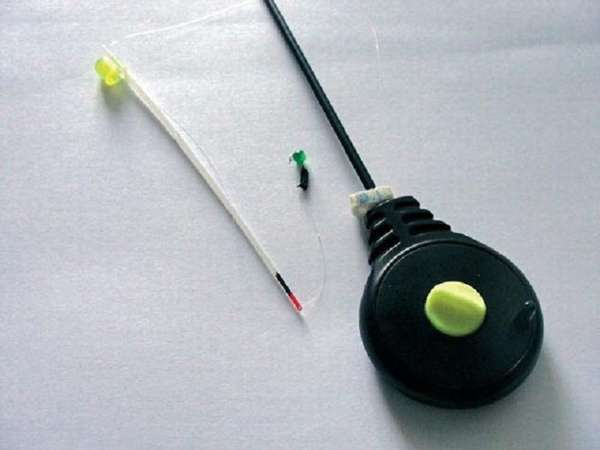
Nod for tackle
Now let's take a nod.
For example, we took nods that can be bought at any fishing store. The choice of nods was discussed earlier.

When buying a nod, you can look at the packaging - the weight is indicated on any package. In our example, we have nods from 0.15 to 0.35 grams. This is the weight of the jig which this particular nod is designed .
It’s worth trying on the jig you plan to tie on. Here I use a length of about 4mm (pictured below) and this is how the tackle is bent. In my opinion, this is even a little overkill (on the left in the photo), then this can be adjusted by extending the nod. This is the normal tilt (pictured on the right) – about a little more than 45 degrees. For perch fishing, this will be optimal.

On the left, the bend of the nod under the weight of the jig is slightly greater than required. This can be adjusted by extending the nod (adjusting its length)
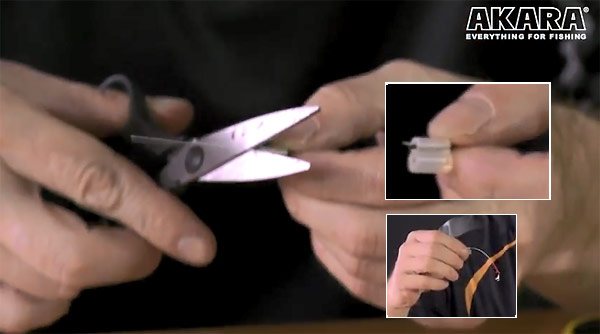
After adjusting the required length of the nod, cut off the excess from the nod
It’s better to bite off the excess from the nod. Otherwise, it will interfere and the fishing line will cling to it . It turns out to be such a neat little nod.
We pass the fishing line through all the holes of the nod . Please note that there are several holes on the nod. This is done so that the line is completely located on the nod, and the correct game is created.
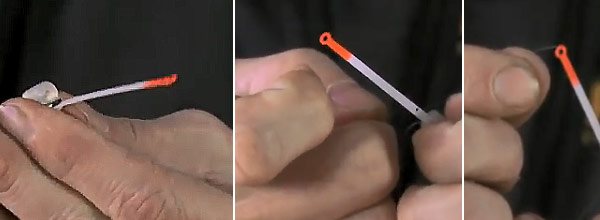
We thread the fishing line into the nod through all the holes.
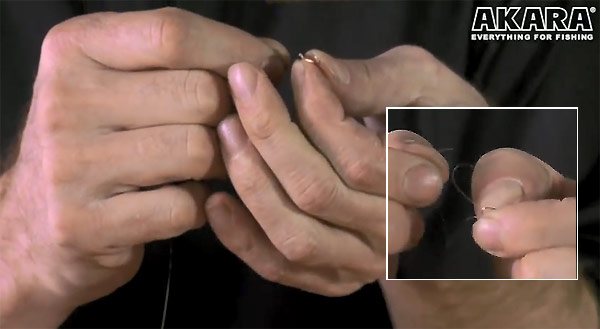
We tie a jig with an eye to the fishing line.
I tie a jig with an eye - this is one of the most common forms of jig. I use a knot that is used to tie any hook. The fishing line is threaded through the eye, then a loop is made, the simplest one, and several turns around the forend of the fishing line. Then the tail is pulled through the loop and tightened. The excess part of the fishing line is cut off.
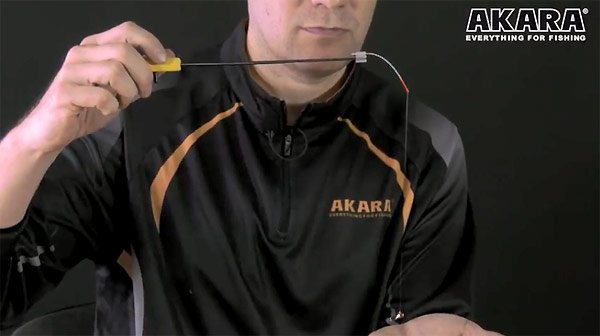
As a result, we got this kind of jig tackle. It’s quite a working tackle, and even tomorrow I’m ready to go and catch fish with it.
Please note that nodding can be played in both directions . When the nod seems to be from above, and when it is from below (in the photo below). When the nod is from below, the deflection is much greater, sometimes this is necessary, especially when there is a strong wind.
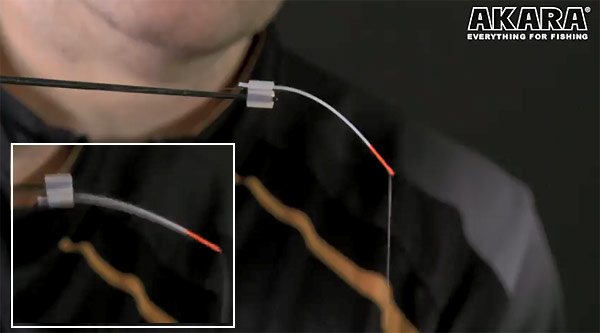
By changing the position of the nod you can change the game of the tackle
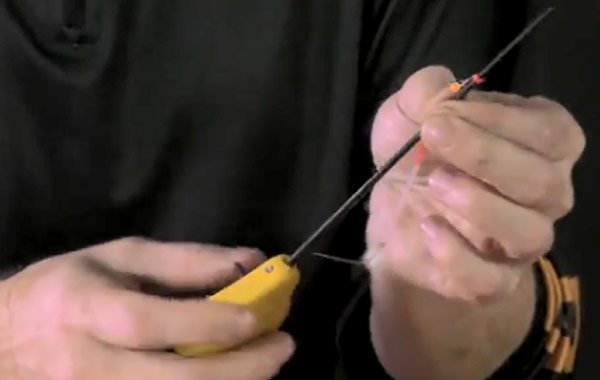
Storing equipped gear during transportation . For more convenient storage of the gear itself during transportation, a cambric is put on the whip. This is an ordinary silicone cambric, up to a nipple rubber. And the tackle is ready for transportation.
I tried to briefly highlight all the nuances of equipping a winter balalaika fishing rod for jig fishing.
Winter fishing rod “balalaika” - features of choice
I myself have been using balalaikas exclusively for many years. And before that I went through a lot of fishing rods of various designs. And every time, moving from one model to another, I experienced this same discomfort for several fishing trips. So my advice to you: experiment less with the designs of winter fishing rods. You can fish equally successfully with any of them.
Fish with the one that, as fishermen say, “feels right in your hand.” It’s better to spend time catching some new bait than to break yourself and get used to the next fashionable fishing rod.
However, there are several points that you need to pay attention to when buying a fishing rod. And we’ll do this using the Salmo Handy Ice Rod as an example. I have known the fishing rods of this company for many years, and during this time they have never let me down.
Housing material
In principle, the bodies of all winter fishing rods known to me are made of plastic or foam.
If the fishing rod is very “folk”, some surprises may arise with plastic structures in the cold. The most common of them is that the spool may jam due to deformation of the body.
But breakdowns also happen. When you hit the ice on the spool, the line rewind pin may suddenly jump off. Several times the pin bounced off along with a piece of the bobbin. Most often, this problem happens with spools made of transparent plastic. The push-button spool reverse brake also often falls apart.
The idea seems to be convenient: the spool can be locked with one movement of your finger. But in the cold, the push-button design of the stopper rarely withstands several fishing trips. The key mechanism of the spool stopper turns out to be more durable.
Foam bodies of winter fishing rods are less susceptible to cold temperatures, but they have another problem: the surface on which the spool rests is too rough.
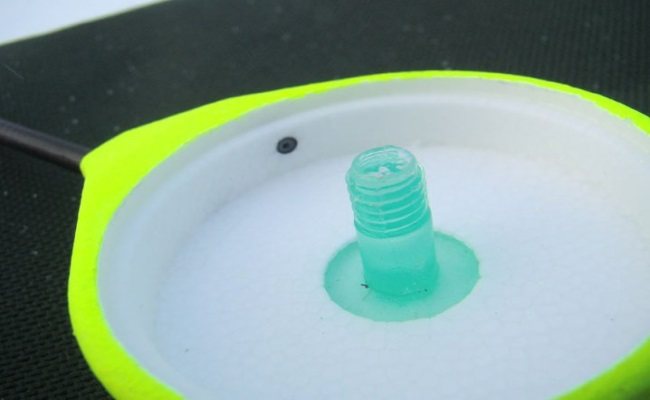
Because of this, the spool of such fishing rods either rotates too freely or stops completely. More sophisticated models of winter fishing rods with a foam body are equipped with a pair of Mylar gaskets.
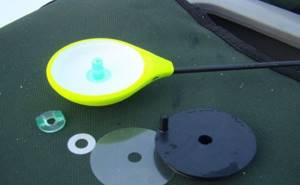
One is placed under the spool, the second - under the top nut. With such reels, the force with which the fishing line is reeled in is very finely regulated.
Whip
In this element of the winter fishing rod, we should be interested in two questions:
- The material from which the whip is made.
- Length of the whip.
Everything is more or less clear with the material. All winter fishing rods adapted for jigs are sold with plastic whips. All such whips have one common drawback. They break in the cold. It’s especially annoying when the whip breaks off when hooking or landing a fish. Over time, on all my fishing rods, I installed whips from outdated soft feeder quivertips. They don’t break even in the cold, and they help a lot when landing fish. Especially if you have to fish at a depth of about 1 meter.
The length of the whip is a purely individual value. Here who is used to it.
For example, I like to catch perch with a standard length whip (18 cm). And there are fishermen who have 5-7 cm long whips on their fishing rods. I also have several fishing rods with short whips in my arsenal. I equip them with a long metal nod and use them exclusively for catching white fish. In this case, the movement of the bait is smooth. Just the kind that bream or bluegill like.
Lock nut
The detail seems to be insignificant, but very important. In my time I have seen many designs of this winter fishing rod assembly. However, I have never seen anything better than a flat nut, like the Salmo Handy Ice Rod: with a lavsan gasket placed under it.

The main advantages of this design are smooth adjustment of the spool stroke and the absence of spontaneous unscrewing and tightening of the nut. This is very important when you have to work with very thin (0.06-0.08 mm) fishing lines, and your fingers are frozen in the cold and do not obey the owner well.
Hole for passing line
Another small but very important detail of a winter fishing rod. She has two very important tasks:
- Ensuring free passage of fishing line.
- Preventing it from winding around the spool axis.
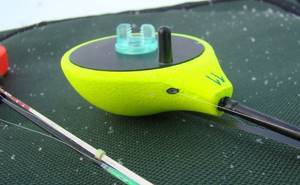
Winter fishing line is very thin, and any abrasion on its surface inevitably leads to a significant loss of strength. And if a new fishing line with a diameter of 0.1 mm has a breaking load that fluctuates within 1 kg, then you can imagine how much a frayed fishing line will resist breaking.
Proper winter fishing rods have a silicone cambric inserted into the hole for passing the fishing line. Moreover, its inner end protrudes slightly beyond the body of the fishing rod, which ensures correct winding of the fishing line.
And everything else: the color of the body, the presence of an additional whip or a stand for a fishing rod, which is used only for stationary fishing - this is secondary. The main thing is that the winter fishing rod does not cause you discomfort when working with it.
Instructions for modifying gear
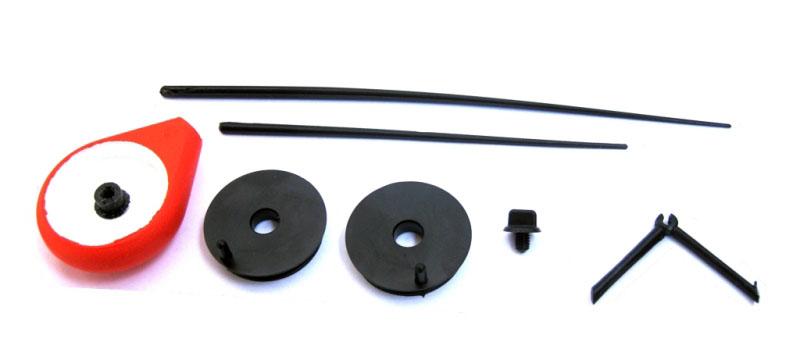
Any experienced fisherman would not be a fisherman if he did not try to modify the purchased equipment. “Balalaika” can also be improved. Let's see how.
Weight reduction
Many domestically produced “balalaikas” are overweight, which interferes with sophisticated play with the tackle. It is not difficult to reduce the size of the case; it consists of foam plastic, so it can be easily processed with sandpaper or a sharp knife .
Expert opinion
Knipovich Nikolai Mikhailovich
Zoologist, hydrobiologist. I am interested in fishing at a professional level.
Important! When working with polystyrene foam, special care must be taken; it crumbles quickly. Pay attention to the grain size of the foam; it is better not to touch coarse-grained foam with a knife.
Significantly reduces the change in the whip with a graphite one . Although it is harder than what is usually used on such fishing rods, it is much lighter.
Editing the whip
We have already said that the whip can be replaced. True, the graphite six is somewhat thicker than the factory one, but here you can carefully make a hole in the body using a heated nail or wire.
Often a factory whip can be deformed, this is usually the result of poor transportation or storage. Usually, some bending resulting from this does not affect the quality of the tackle.
Correction of deformation can be achieved by ordinary heating over steam from a kettle. Some amateurs file down the factory whip or shorten it, this is not for the sake of reducing weight, but to increase flexibility.
Creating a Comfortable Hole
Often the hole for releasing the fishing line is not only not softened in any way, but also poorly processed around the edges. As a result, line breaks are allowed during a sharp bite or fishing. Often the fishing line wears out in several places, which is not immediately noticeable. But then, already in the process of fishing, a breakage or loss of stretching properties of the monofilament and its deformation may also occur.
Expert opinion
Knipovich Nikolai Mikhailovich
Zoologist, hydrobiologist. I am interested in fishing at a professional level.
Important! When processing the hole for the fishing line in the body, you must not make it too large. Otherwise, the winding of the fishing line on the spool may be uneven.
The easiest way to upgrade is to insert a cambric or nipple into the hole. You can either make it longer or glue it. In both cases, the fishing line will no longer fray.
Increasing spool rotation speed
This result is achieved by installing the lower spool nut if there is none. To do this, a hole is made in the body and a new thread is inserted if the factory one is not suitable.
You can grind off the inner walls of the case, but this labor-intensive process does not give much effect.
Creating a “pocket” for a jig
A winter fishing rod with a handle usually has a hollow hole in which it is convenient to store jigs. No one goes fishing with one. There is no such hole in the “balalaika”, but it is very simple to make one by making the required cavity in the wide rear part of the body. For convenience, it can be covered with adhesive tape or a piece of foam rubber.
You can also use a piece of Velcro to stick several jigs on the side at once, where they will not interfere with your hand.
Balalaika design
Structurally, this fishing rod, on the one hand, is quite simple, but on the other hand, it is very ergonomic. There is no separate reel in it: it is placed directly in the round handle of the fishing rod and is complemented by a whip. The body is often made of plastic or foam.
The fishing rod fits easily in the fisherman’s hand, making it possible to play with a jig using only a brush. However, the design of this type of fishing rod is best suited for active fishing, although some amateur anglers successfully attach the balalaika to spacers on the edge of the hole and fish with a stationary jig with an attachment.
All fishermen know that bloodworm is one of the best natural baits, but few know how to properly store it so that it does not die. In addition to wet newspaper and a rag, there is another way to store it.
Tip: Bloodworms can also be stored in raw potatoes. Cut the potato in half and remove the core. Place the bloodworm in the resulting cavity and put the potato in the refrigerator. So bloodworms can be stored for 3-4 days.
How to choose in a store
If you do not plan to modify the design yourself, try to purchase similar equipment of better quality. It is believed that some of the best models today are considered to be fishing rods from the Salmo line, but this option is not exactly a budget option. However, the choice of domestic products should be approached thoroughly:
- the whip must be removed from the spool if it is tightly attached; if the whip breaks, you will have to say goodbye to the entire fishing rod;
- the line should come out of the spool freely;
- the basis of the body should be foam plastic, and not plastic, since it retains heat well and does not deform in the cold;
- You should not choose a long whip; with such a design, difficulties may arise with playing with a jig and landing prey;
- the hole in the spool for the line to come out should not have even the slightest notches so that the line does not break;
- the body of the fishing rod should be bright in color, preferably red or yellow, they are most noticeable on snow and ice;
- in the best designs, two nuts are used at once - upper and lower, so the spool practically does not contact the body.
How to make such a fishing rod with your own hands
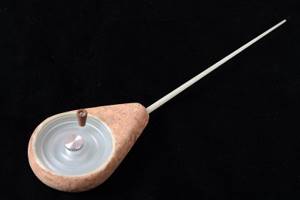
Craftsmen claim that the process is simple. It’s not for nothing that they say that there is no fishing tackle that an experienced angler cannot make.
Tools
In order to make a homemade balalaika with your own hands, you are unlikely to have to go around several stores in search of tools. You will need:
- stationery knife, sharp;
- waterproof glue;
- compass;
- ruler;
- sandpaper;
- knitting needle and drill;
- paint brush.
Materials
You don’t have to look for them for long either:
- a piece of dense polystyrene foam;
- cambric, nipple or small plastic tube;
- a coil with a diameter of no more than 45 mm;
- whip of choice;
- connector for attaching the nod to the whip;
- nod;
- water-based paint.
Direct manufacturing
The process is also available:
- select a piece of foam commensurate with the thickness of the coil;
- using a compass and a knife, the inner part of the body is determined and cut out;
- then the outer diameter and shape of the fishing rod are cut out;
- a knitting needle is used to mark and then a hole for the fishing line is drilled;
- a cambric is inserted into the hole;
- the coil is inserted into the inner part and attached to the foam using washers;
- the coil cover is glued to the body;
- to attach the nod and pass the fishing line, a connector is made; for this, the insulation of a two-core wire is quite suitable;
- The body is painted in a bright, matching color.
Balalaika - a universal winter fishing rod for jig fishing
Winter fishing with a jig is perhaps the most democratic of all the sporting methods of fishing known to me. If you calculate the costs of equipment, they will turn out to be much less than even such an inexpensive method of fishing as a fly rod.
Actually, what is required to try yourself as a winter fisherman? Several winter fishing rods, a box (or folding chair), an ice auger (or an ice pick), and a dozen different jigs.
Later, when the process of fishing from ice absorbs your consciousness, you will need a few more relatively inexpensive investments from the family budget, but for the first time the above accessories will be enough.
